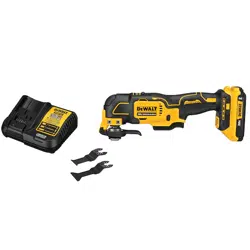Loading ...
Loading ...
Loading ...

ENGLISH
6
Shipping the
DEWALT
FLEXVOLT™ Battery
The D
E
WALT FLEXVOLT™ battery has two modes: Use and
Shipping.
Use Mode: When the FLEXVOLT™ battery stands alone or is
in a D
E
WALT 20V Max* product, it will operate as a 20V Max*
battery. When the FLEXVOLT™ battery is in a 60V Max* or a
120V Max* (two 60V Max* batteries) product, it will operate
as a 60V Max* battery.
Shipping Mode: When
the cap is attached to
the FLEXVOLT™ battery,
the battery is in Shipping
Mode. Strings of cells are
electrically disconnected within the pack resulting in three
batteries with a lower Watt hour (Wh) rating as compared
to one battery with a higher Watt hour rating. This increased
quantity of three batteries with the lower Watt hour rating
can exempt the pack from certain shipping regulations that
are imposed upon the higher Watt hour batteries.
The battery label indicates two Watt hour ratings (see
example). Depending on how the battery is shipped, the
appropriate Watt hour rating must be used to determine
the applicable shipping requirements. If utilizing the
shipping cap, the pack will be considered 3 batteries at
the Watt hour rating indicated for “Shipping”. If shipping
without the cap or in a tool, the pack will be considered one
battery at the Watt hour rating indicated next to “Use”.
USE: 120 Wh Shipping: 3 x 40 Wh
Example of Use and Shipping Label Marking
For example, Shipping Wh rating might indicate 3 x 40 Wh,
meaning 3 batteries of 40 Watt hours each. The Use Wh
rating might indicate 120 Wh (1 battery implied).
ion batteries (or battery packs) indicates that the costs to
recycle these batteries (or battery packs) at the end of their
useful life have already been paid by
DEWALT
. In some
areas, it is illegal to place spent nickel cadmium, nickel metal
hydride or lithium-ion batteries in the trash or municipal
solid waste stream and the Call2Recycle® program provides
an environmentally consciousalternative.
Call 2 Recycle, Inc., in cooperation with
DEWALT
and other
battery users, has established the program in the United
States and Canada to facilitate the collection of spent nickel
cadmium, nickel metal hydride or lithium-ion batteries. Help
protect our environment and conserve natural resources by
returning the spent nickel cadmium, nickel metal hydride
or lithium-ion batteries to an authorized
DEWALT
service
center or to your local retailer for recycling. You may also
contact your local recycling center for information on
where to drop off the spent battery. RBRC® is a registered
trademark of Call 2 Recycle,Inc.
Fuel Gauge Battery Packs
Some
DEWALT
battery packs include a fuel gauge which
consists of three green LED lights that indicate the level of
charge remaining in the batterypack.
The fuel gauge is an indication of approximate levels of
charge remaining in the battery pack according to the
followingindicators:
75–100% charged
51–74% charged
< 50% charged
Pack needs to be charged
To actuate the fuel gauge, press and hold the fuel gauge
button. A combination of the three green LED lights will
illuminate designating the level of charge left. When the
level of charge in the battery is below the usable limit, the
fuel gauge will not illuminate and the battery will need to
berecharged.
NOTE: The fuel gauge is only an indication of the charge left
on the battery pack. It does not indicate tool functionality
and is subject to variation based on product components,
temperature and end-userapplication.
For more information regarding fuel gauge battery packs,
please contact 1-800-4-
DEWALT
(1-800-433-9258) or visit
our website www.dewalt.com.
Transportation
WARNING: Fire hazard. Do not store or carry the
battery pack so that metal objects can contact
exposed battery terminals. For example, do
not place the battery pack in aprons, pockets, tool
boxes, product kit boxes, drawers, etc., with loose
nails, screws, keys, etc. Transporting batteries
can possibly cause fires if the battery terminals
inadvertently come in contact with conductive
materials such as keys, coins, hand tools and the
like. The US Department of Transportation Hazardous
Material Regulations (HMR) actually prohibit
transporting batteries in commerce or on airplanes
in carry-on baggage UNLESS they are properly
protected from short circuits. So when transporting
individual battery packs, make sure that the battery
terminals are protected and well insulated from
materials that could contact them and cause a short
circuit. NOTE:Li-ion batteries should not be put in
checkedbaggage.
Important Safety Instructions for All
Battery Chargers
WARNING: Read all safety warnings,
instructions, and cautionary markings for the
battery pack, charger and product. Failure to
follow the warnings and instructions may result
in electric shock, fire and/or seriousinjury.
• DO NOT attempt to charge the battery pack with
any chargers other than a
DEWALT
charger.
DEWALT
chargers and battery packs are specifically designed to
worktogether.
• These chargers are not intended for any uses other
than charging
DEWALT
rechargeable batteries.
Loading ...
Loading ...
Loading ...
